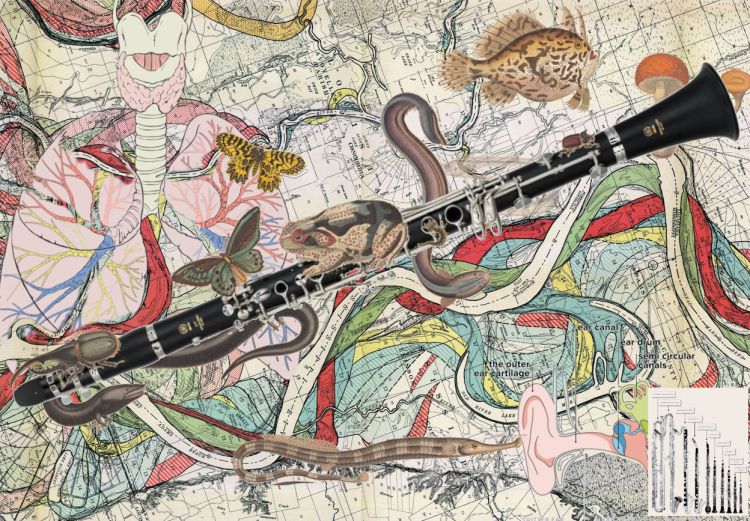Rethinking the clarinet as an animal

- Date: Wednesday 12 February 2025, 17:30 – 20:00
- Location: Clothworkers Centenary Concert Hall, Music
- Type: Seminars and lectures
- Cost: Free
Public lecture by Dr Scott McLaughlin presenting his research on new approaches to performing/composing with the clarinet
This talk is about how to compose for the clarinet in a way that lets the instrument have its own agency and behaviors, to treat it more like an animal that we interact with, than a tool we manipulate. What does this mean for performer technique and agency, and how do we train musicians in this way without undermining existing technique or allowing the music to become simply random noise. Can the clarinet, like a bird, be seen to have its own language of sounds and actions, distinct from what we impose on it.
The 16th Century French essayist Montaigne asked 'When I Am Playing With My Cat, How Do I Know She Is Not Playing With Me?', pondering on the unknowability of animal consciousness, but also on how play is mutual, the cat and the person discovering ways to communicate and play together as equals. More recently, composer Liza Lim put Montaigne's question in musical terms to ask if her cello was actually playing her, which opened the door for me to explore what it would mean to rethink the clarinet not as a certain 'clarinetty' hue to be applied to the same C-sharps and Ds and E-flats as all the other music, but for every single clarinet to be a distinct and unique personality with its own musical language (related but distinct). How to compose a music that would emerge slightly differently on every individual clarinet in its interactions with different human players. How to make a clarinettist not the controller of the instrument but its supporter, a provider of energy, coaxing and guiding, a clarinettist that plays mutually 'with' the instrument's own preferred resonances and timbres. This talk describes the journey of finding that music and the people who want to play it.

